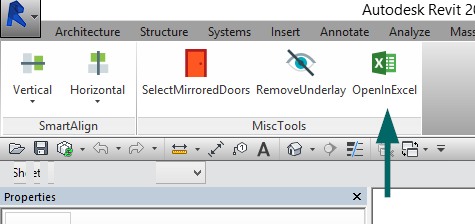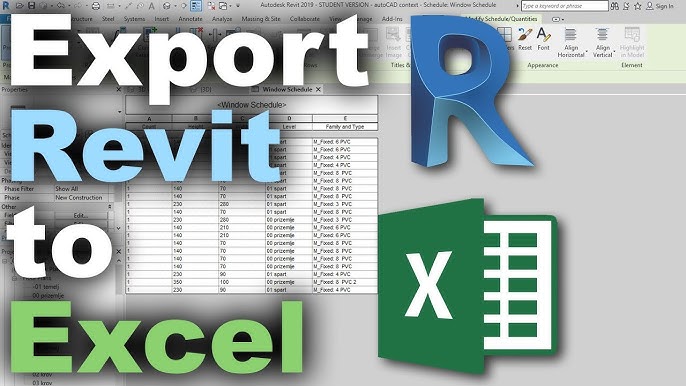Boost Your Style Game with Important Revit Add Ins
Wiki Article
Excel-to-Revit: A Game-Changing Process for Architectural Style - Revealing the Keys
Are you tired of investing hours on architectural design? Look no more! Introducing excel-to-revit, the game-changing process that will certainly change your layout procedure. With excel-to-revit assimilation, you can streamline your architectural design, unlock efficiency, and optimize cooperation within your group. In this write-up, we will certainly introduce the secrets of this effective device, revealing you just how it can change your style jobs. Prepare yourself to take your building style to the next level with excel-to-revit!The Power of Excel-to-Revit Assimilation

Picture the comfort of being able to update and modify task information in Excel, and quickly see those changes mirrored in your Revit design. No more hand-operated data access or tiresome updates. With Excel-to-Revit integration, you can conserve time and decrease mistakes by leveraging the power of Excel's formulas and features to automatically create precise information in Revit.
Not only does this assimilation improve performance, but it additionally enhances cooperation among staff member. You can quickly share Excel documents with colleagues, that can then import the data right into their Revit models. This advertises a smooth exchange of information and makes certain that everyone is dealing with one of the most up-to-date information.

Improving Building Design With Excel-To-Revit
Simplifying architectural layout is made easier with using Excel-to-Revit (revit tools). With this effective assimilation, you can maximize your operations and conserve beneficial time throughout the layout procedure. By leveraging the capacities of Excel and Revit, you can seamlessly transfer information in between the 2 systems, removing the requirement for hand-operated data entrance and lowering the risk of errorsExcel-to-Revit permits you to import and export information effortlessly, enabling you to quickly upgrade and modify your architectural styles. You can develop schedules, determine amounts, and create records in Excel, and then transfer that data straight right into your Revit version. This integration guarantees that your style info is constantly current and synchronized, eliminating the requirement for hands-on updates and minimizing the opportunities of inconsistencies.
By using Excel-to-Revit, you can likewise benefit from the powerful computational abilities of Excel. You can do intricate estimations, assess data, and automate repetitive tasks, all within Excel. With simply a couple of clicks, you can import the outcomes back right into Revit, enabling you to make educated style decisions and enhance your architectural designs.
Unlocking Efficiency: Exploring the Excel-to-Revit Operations
Optimize your productivity by seamlessly integrating Excel and Revit for a more reliable operations. With the Excel-to-Revit operations, you can open a whole new level of efficiency in your building layout process. By utilizing the power of Excel's information monitoring abilities and integrating it with the flexibility and accuracy of Revit, you can simplify your layout process and save beneficial time.One of the key advantages of this assimilation is the capability to import and export data in between Excel and Revit. This indicates that you can quickly transfer task info, such as room timetables or material amounts, from one software application to the other, removing the requirement for manual information access and reducing the opportunities of errors. You can additionally produce custom solutions and calculations in Excel to automate repeated tasks and do complex estimations, which can then be flawlessly integrated right into your Revit models.
In Addition, the Excel-to-Revit process enables better control and collaboration in between staff member. With Excel working as a central information center, multiple group participants can work with various facets of the job all at once, updating and sharing details in real-time. This not only enhances interaction but additionally makes sure that every person is working with the most current information, eliminating the danger of inconsistencies.
Maximizing Collaboration: Excel-to-Revit for Architectural Teams
By effortlessly incorporating Excel and Revit, architectural teams can substantially boost partnership and accomplish more efficient layout results. When using this powerful operations, you can quickly transfer data in between Excel spreadsheets and Revit models, simplifying the design procedure and improving communication amongst group members.In addition, by leveraging Excel's effective calculation capacities, you can do complicated calculations and evaluation on your design information, supplying important understandings and driving notified decision-making. This assimilation likewise enables you to export information from Revit to Excel, enabling you to produce comprehensive records, charts, and charts for presentations and evaluation. This collaborative operations promotes reliable communication and control among group members, as Excel functions as a main hub for information management and sharing.
Total, by embracing the Excel-to-Revit operations, architectural groups can attain higher degrees of collaboration, effectiveness, and precision in their design process. revit plugins. This assimilation empowers teams to interact effortlessly, making certain that everyone gets on the same page and adding to the success of the task
Unveiling the Secrets of Excel-to-Revit Combination

One of the tricks of Excel-to-Revit assimilation is the ability to take advantage of the power of solutions and calculations in Excel to drive parameters and produce facility geometries in Revit. You can connect Excel spreadsheets to Revit households, enabling you to input information straight into the spreadsheet and have it immediately update in the Revit design. This simplifies the design process and makes sure precision and uniformity throughout the project.
One more trick is the ability to create customized routines and records in Excel, making use of information extracted from Revit. This permits you to assess and visualize project information in a manner that is not possible within Revit alone. You can easily generate amount liftoffs, price price quotes, and task timelines, supplying useful understandings for decision-making revit tools and job administration.
In addition, Excel-to-Revit integration enables efficient cooperation amongst staff member. Multiple users can work with the exact same Excel spreadsheet at the same time, making it simpler to coordinate and track changes. You can additionally utilize Excel's commenting function to offer feedback or connect layout modifications.
Conclusion
So there you have it, the tricks of excel-to-revit combination have been revealed. This game-changing workflow has the power to improve architectural style, unlock effectiveness, and make the most of partnership for architectural teams. By integrating the power of Excel and Revit, designers can now work a lot more effectively, conserve time, and create much better styles. So why wait? Begin incorporating excel-to-revit integration into your architectural design procedure today and change the means you function.With simply a few clicks, you can import the results back right into Revit, permitting you to make educated design decisions and maximize your building designs.
By utilizing the power of Excel's information management capabilities and integrating it with the adaptability and accuracy of Revit, you can streamline your style procedure and conserve beneficial time.
By seamlessly integrating Excel and Revit, architectural groups can substantially improve collaboration and accomplish a lot more reliable layout end results. When utilizing this powerful workflow, you can easily transfer data between Excel spread sheets and Revit designs, streamlining the layout process and boosting communication amongst team participants.Moreover, by leveraging Excel's powerful computation capabilities, you can do complex estimations and analysis on your style data, driving and providing useful insights notified decision-making.
Report this wiki page